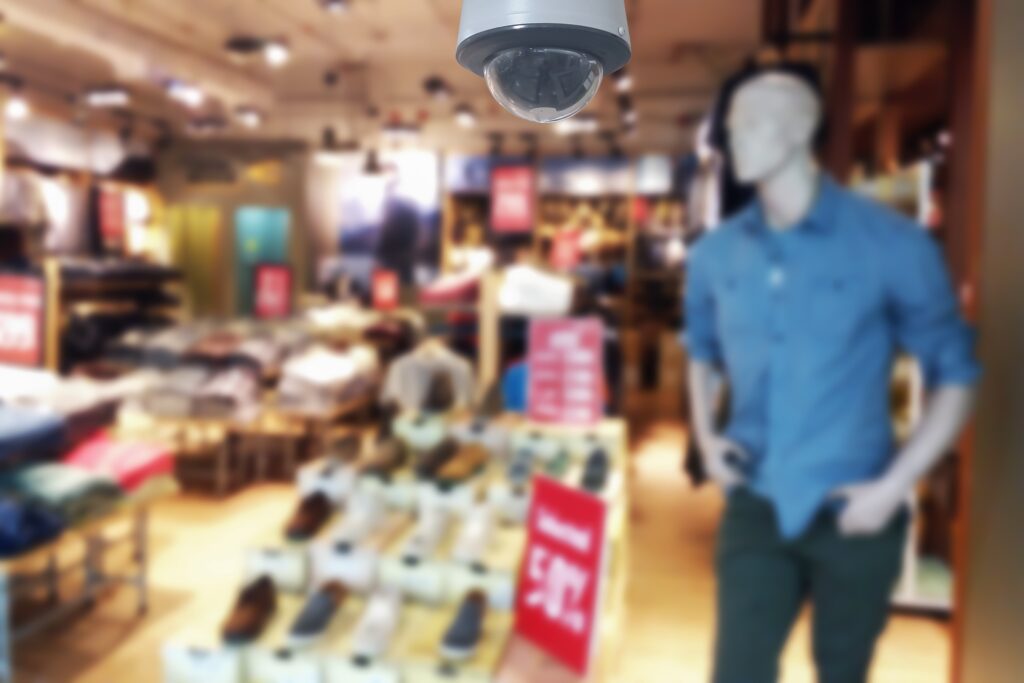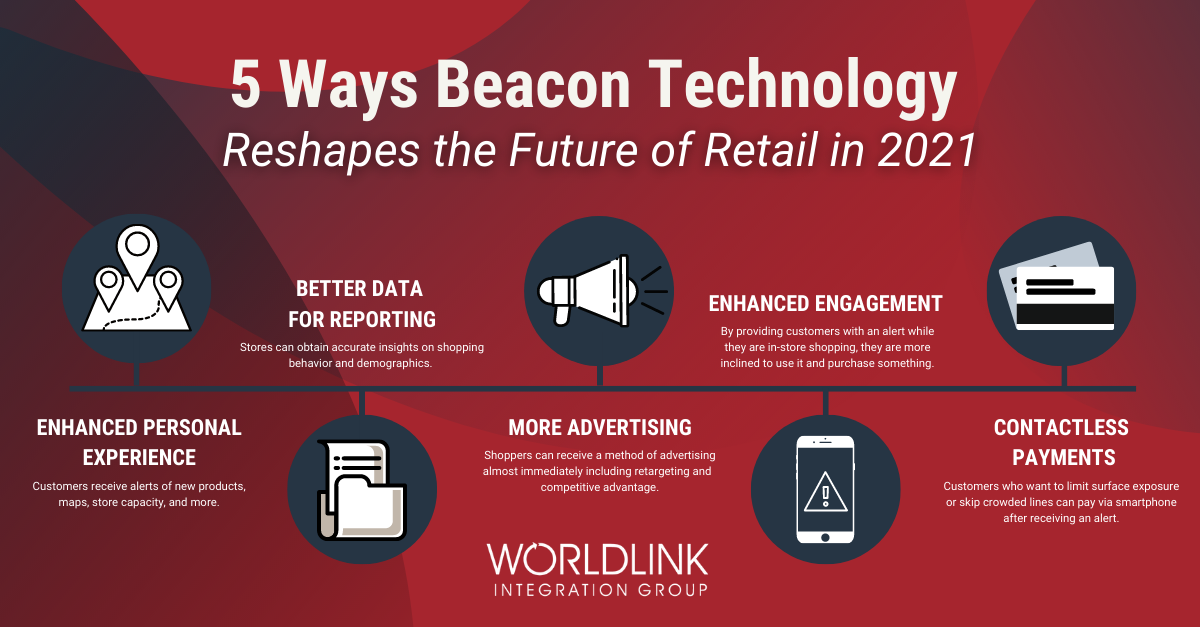Even before the pandemic, many consumers shifted their preference from in-store shopping to the ease of online. Brands thus began transitioning to feature a digital presence long before we transitioned into social distancing. In 2020, a record 12,000 stores permanently closed their doors. However, as we embark further into 2021, store openings are outpacing closures.
Small to mid-size businesses serve as the backbone of the American economy. As American consumers once more adjust to a new normal of cautious reopenings, retailers must adapt to thrive. For instance, 87% of shoppers prefer shopping in stores with touchless self-checkout options. By adapting to more change, smart beacons in retail can ease the transition of a successful reopening and carry on the future of retail in 2021.
Overview: Proximity Marketing and Beacon Technology
Leading retailers use proximity marketing to distribute advertising wirelessly to those located in a particular place. Although it may sound similar to digital advertising, it falls into a much more sophisticated marketing category. This type of technology focuses on absolute specificity: marketing to specific consumers, at a particular time, and one exact location. Moreover, successful proximity marketing depends on the use of beacon technology.
Smart beacons in retail are a piece of in-store Bluetooth technology that detects nearby smartphone users. First introduced in 2013 by Apple, beacon technology gathers data on users entering a location. After the users opt-in to receive notifications, it then sends personalized alerts to smartphones with the end goal of convincing them to purchase something in-store. Additionally, the user has an enhanced customer experience through digital personalization.
The Future of Retail in 2021 Using Beacon Technology
Researchers predict a major comeback for many retailers hit especially hard by COVID. Most of these categories consist of discounters; however, malls and restaurants continue making big plans. The best way to roll out their post-pandemic openings is to use proximity marketing and beacon technology. Here are five ways stores can adapt to the next new normal and sustain the future of retail in 2021.
-
Enhancing a personalized experience in a socially distanced world
Before the pandemic, successful retailers personalized the shopping experience. They did this by offering enhanced customer support. As you enter the store, staff immediately informs you of discounts, new items, and answers to any questions you may have.
Although this strategy still exists, it can be a lot more challenging to achieve in a world that still embraces social distancing. However, with smart beacons in retail, many of these personalized experiences can be taken care of, such as indoor navigation, tailored menus, and traffic updates.
Once customers enter stores, they can receive notifications showing them the locations of new products. Furthermore, if stores have larger layouts, alerts can guide users more efficiently than a GPS. This strategy is ideal for stadiums, malls, department stores, events, and museums.
Also, restaurants can send out menus. This way, individuals can keep their distance and not touch physical menus or obtain access via QR code.
Lastly, by tracking in-store movement, smart beacons in retail can update individuals on store capacity. They can receive alerts that either notifies them of incoming crowds or of low-risk times to shop.
-
Better user data for reporting
Every business must know its customers and their corresponding buyer behavior. Therefore, the more data, the better. With smart beacons in retail, stores can obtain insights on shopping behavior and demographics. You can answer more specific questions that include some of the following:
- How long do shoppers stay in particular parts of my store?
- What discounts work better on specific days of the week?
- Does it make a difference in purchasing behavior if consumers shop alone or with others?
Beacon technology can capture this data to give you better insights into your store. That way, you can make any changes needed to drive sales.
-
Additional advertising method
Shoppers can receive a method of advertising almost immediately. Traditional digital advertising methods have limited control over when and where users receive their ads. For example, advertisers can control the hour and mile radius. However, smart beacons in retail can control a radius in mere feet, and the second they enter that radius for a better perspective.
Plus, retailers have an additional method of retargeting. Once users interact with an online product, they receive ads showing them the product a second time. Beacon technology can deploy this retargeting on specific products and sections of the store the customer browsed through.
One strategy not used by many retailers consists of using beacon technology competitively. Businesses, for instance, may launch locations adjacent to competing stores. This is known as a competitive strategy. By establishing a new location next to a competitor, they can compete for the same local audience.
For example, it’s not a coincidence that you see a Burger King near a MacDonald’s. If located close enough, beacon technology sends out alerts to those near or in a competing store. These alerts can notify shoppers of discounts or cheaper pricing to convert once-loyal customers and thus refine competitive advantage.
-
Enhanced engagement
One of the most popular uses of beacon technology surrounds enhancing customer engagement. Many younger generations don’t typically use coupons or hunt for discounts, and other generations may forget them. By providing them with an alert while they are in-store shopping, they are more inclined to use it and purchase something.
Research conducted on beacon technology in convenience stores states proximity marketing led to mass increases in sales. In a Shopkick case study, the retailers produced a 180% increase in sales by sending in-store promotions via smartphone notification. In addition, many beauty retailers send in-store freebies such as free makeup tutorials and small birthday packages.
-
Contactless payments
Along with traffic notifications that inform shoppers of capacity, smart beacons in retail can also send payment notifications. Customers who want to limit surface exposure can receive payment alerts once they finished a meal. This way, they can skip crowded lines or pay immediately as opposed to waiting for their server.
A Beacon of Hope in the Year Ahead
Retail sales in 2021 are finally increasing as stores begin to reopen their doors. However, for stores to thrive, they must continue to embrace change and devise new strategies. To keep bringing in new consumers, retailers must implement new ways to capture the attention of prospective customers. The future of retail in 2021 and beyond looks a lot brighter with the aid of beacon technology.
Worldlink Integration Group can assist with your 2021 technology improvements, including beacon technology. We can help your brand deploy technology solutions that make innovations like this a reality. Work with our team to create a faster, safer, and more reliable network that will help generate sales more efficiently than ever. This type of investing paints a clear picture for other major brands looking to the future: It’s time to rethink how we handle our supply chains and create an even more customer-centric approach to doing business.
Contact us to learn more, or give us a call at (949) 861-2830.


